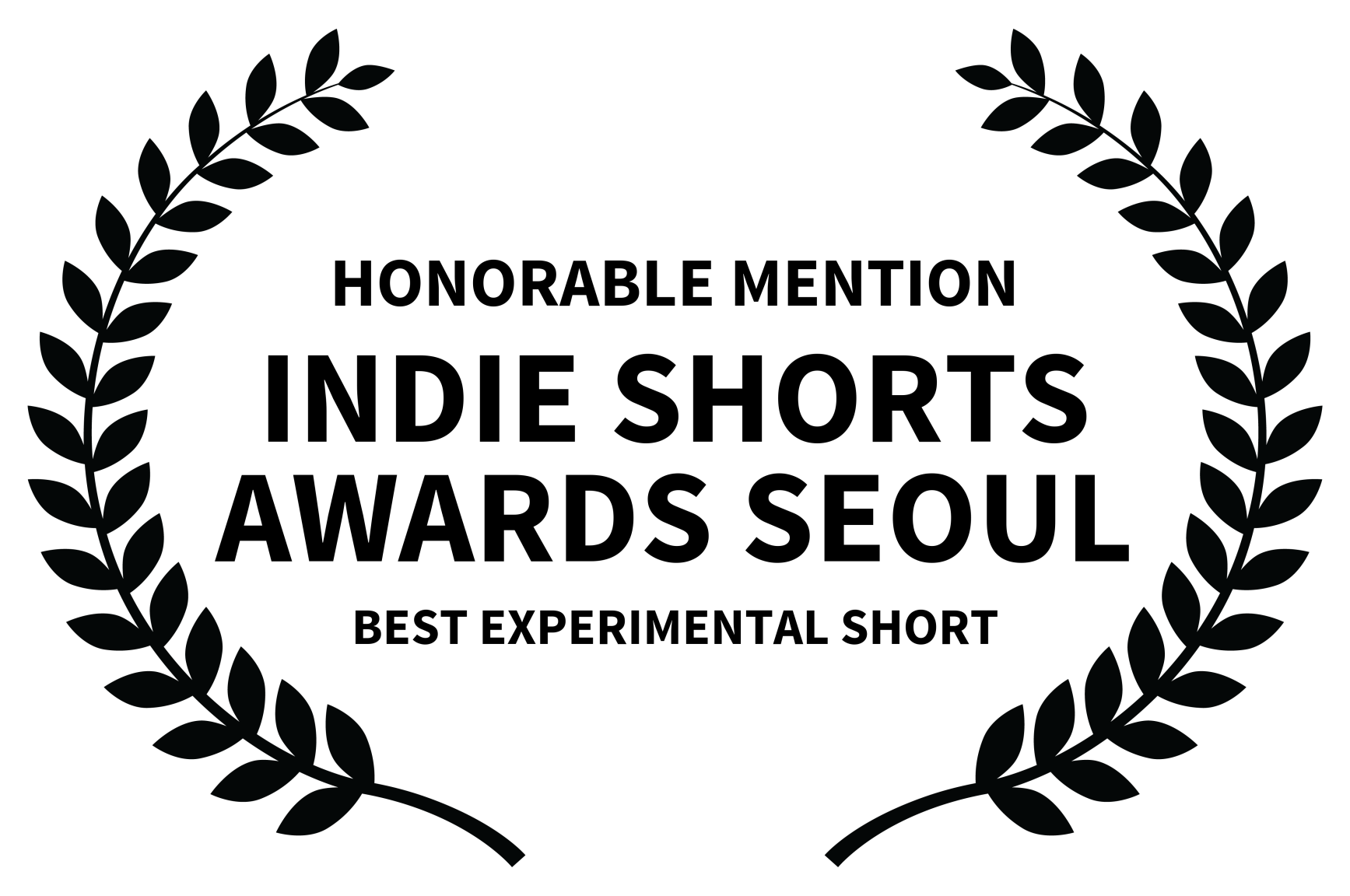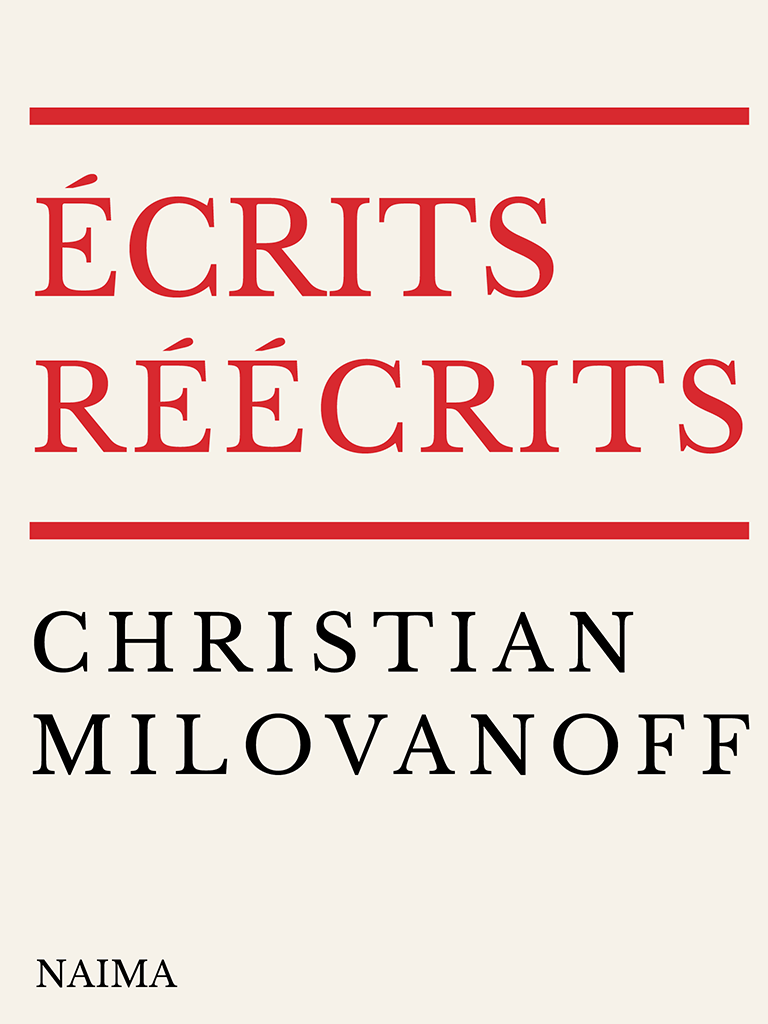NEWS
Upcoming/à venir :
- HOLLYWOOD BEST INDIE FILM AWARDS, USA (S).- NEW YORK FILM & CINEMATOGRAPHY AWARDS, USA (S).
- ARTIST’ S RESIDENCY AT NATIONAL CENTER FOR DRAMATIC & SCENIC ARTS, Kasserine, Tunisia
- MUSÉE DES BEAUX-ARTS (Fine arts Museum), Nanjing, Chine (E).
- GALERIE HOLLY, Shanghaï, Chine (E).
AWARDS/PRIX:
- Meilleur Film Expérimental/Best Experimental Film Award , Athens International Film Festival, Greece, April 2025
- Meilleur Film Expérimental/Best Experimental Film Award , London Awards International Film Festival, UK, May 2025
EXHIBTIONS/SCREENINGS :
- Astor Cinema, Athens International Film Festival, Greece, April 2025
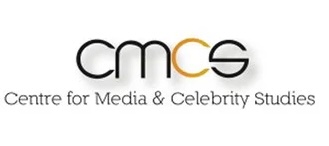

- PRIX EKPHRASIS (ADAGP et AICA), Texte de Véronique Terrier Hermann, Le Quotidien de l’Art. “De l’intranquillité”
English version below
ICI/ HERE
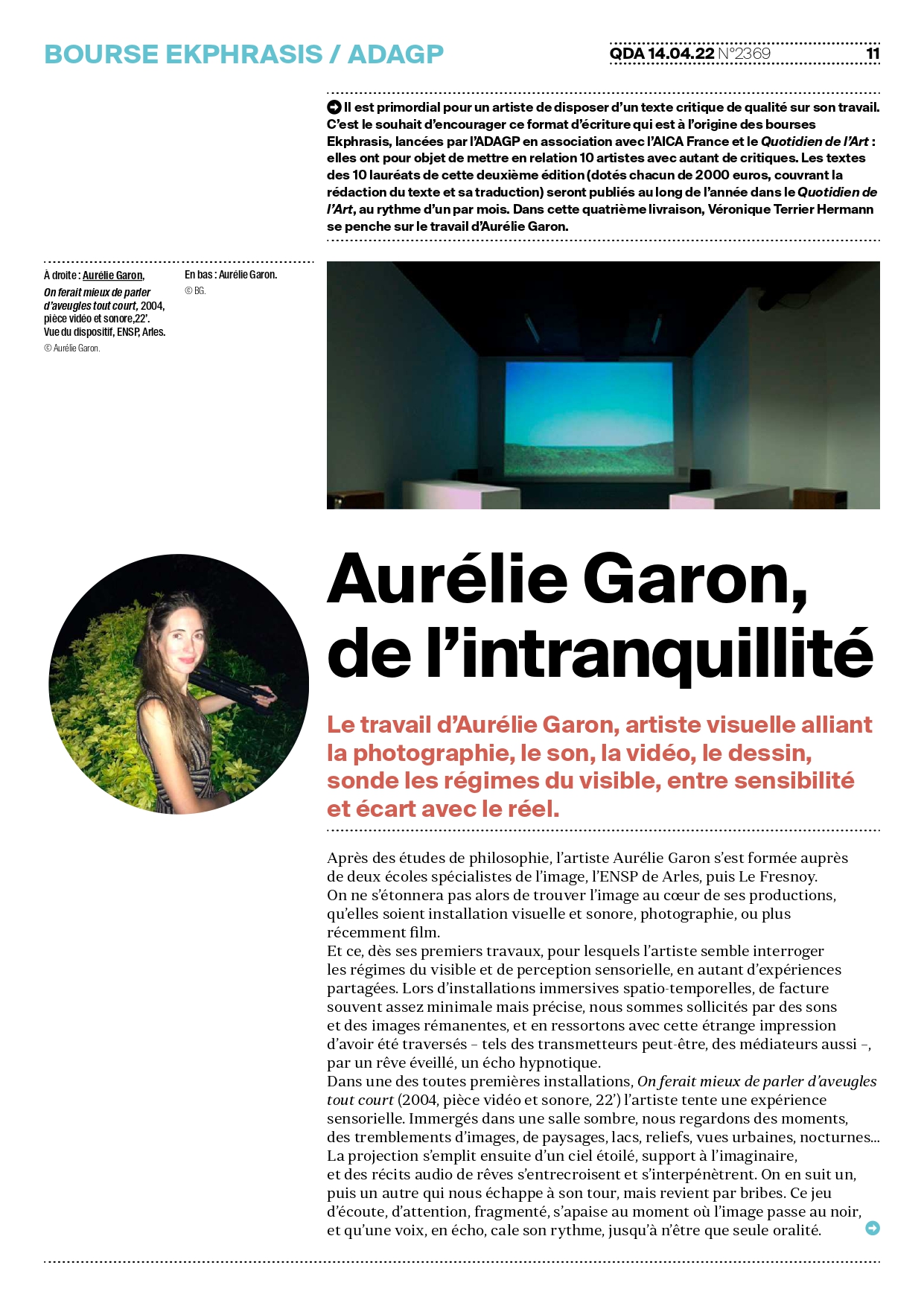

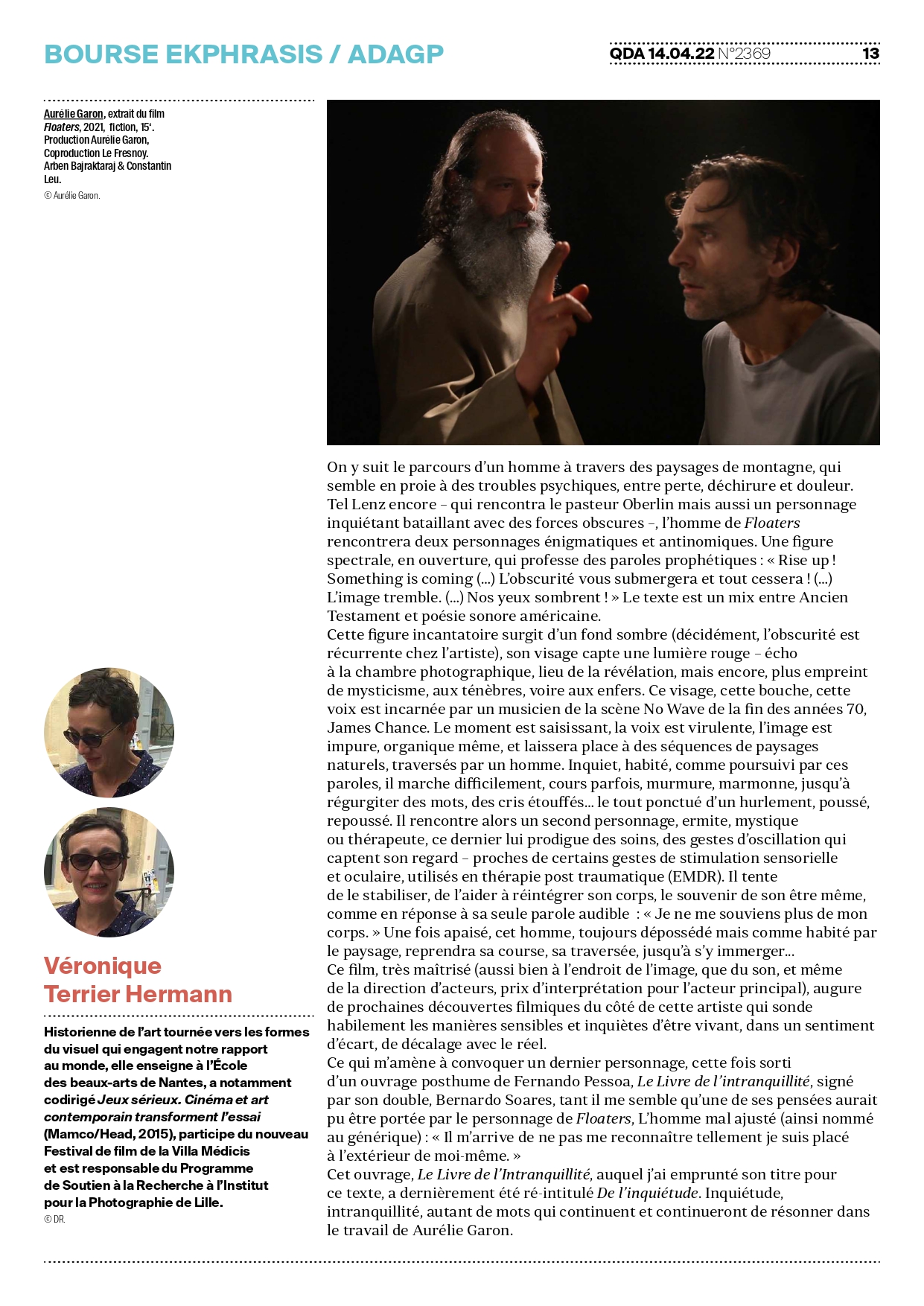
On Disquiet
The work of Aurélie Garon, a visual artist combining photography, drawing, video and sound, probes the regimes of the visible, between sensitivity and discrepancy with reality.
After studying philosophy, Garon trained at two schools specializing in image-making, the ENSP in Arles and then Le Fresnoy. It is therefore not surprising to encounter the image at the core of her productions, whether they are visual and sound installations, photography or, more recently, film.
And this has been a constant from her earliest works, in which the artist seems to question the regimes of the visible and of sensory perception, in so many shared experiences. In spatio-temporal immersive installations, often of a precise, minimal construction, we are solicited by sounds and afterimages, and emerge with the strange impression of having been traversed - as transmitters perhaps, as mediators too - by a waking dream, a hypnotic echo.
In one of the very first installations, It Would Be More Correct to Speak of the Blind and Leave it at That (On ferait mieux de parler d'aveugles tout court) (2004, video and sound, 22') the artist attempts a sensory experience. Immersed in a dark room, we watch moments, tremulous images, landscapes, lakes, reliefs, urban views, night views... The projection then fills with a starry sky, a support for the imaginary, and audio narratives of dreams intersect and interpenetrate.
We follow one, then another, which escapes us in turn, but returns in snippets. This game of listening, of attention, fragmented, alleviates itself when the image turns to black, and a voice, as an echo, sets its rhythm, until only sound remains. Loss of image, loss of narrative: we remain alone in the face of these experiences, retained by our senses, a persistence of impressions.
In Two Parallel Lines Meet at Infinity (Deux droites parallèles se rejoignent à l’infini) (2006, sound installation, 22'), the spectator, once again in a darkened room, will have no other relationship to the real than listening to dream stories. If each part is sharp, the whole is intertwined, porous, and produces an impression of confusion. The sound montage, complex and tenuous, alternates the rising of some voices and the receding of others, as if we were entering and leaving this audio material, this sound film.
Another proposal that plays on dualities and complementarities is the video and sound installation It’s a Noise that is There, which Enables Breathing, One Could Say... (C’est un bruit qui est là, qui permet de respirer on dirait... ) (2007). The camera revolves around two men of similar strength, facing up to each other, who engage and disengage, whilst a crackling vinyl record is eroded by the relentless rotation of a turntable. The round of the wrestlers and the rotation of the record echo, counteract, snap-in and alter each other. Distortion of duration and equivalence, internal dualities, erosion of space-time, the installation - between a single machine and Morel's invention - offers us a sensitive experience of perpetual looping and at the same time of finitude, of we humans and of our modernity.
Diptych (Diptyque) (2014), an exclusively visual piece this time, articulates two images of landscape that blur and complement each other simultaneously. Alternating photography and drawing, they echo a similar movement: on the one hand, one recognizes smoke emanating from a landscape; on the other, the eruption of a wave on a road. Fire, war, storm, the images remain silent. Just like White, a Triptych(White, tryptique) (2016), which disseminates, in a combination of photography and drawing, landscape matter, tormented, shaken, unstable. Through their visual materiality, the present elements assert their inscription in the image but also in the time of the phenomenon.
This ambiguous presence of the landscape reminds me of a work by Georg Büchner, Lenz(1839), a short tale of a man's slide into madness.
After several months of wandering, the poet Lenz joins a pastor's house to find some comfort, but the immersive experience of nature will eventually increase his troubles, his crises all seeming to be linked to a hazy perception of the landscape. The first is during the crossing of the mountain, whose strong presence finds in him unsettling echoes; the others at the blurred moments of twilight. Büchner subtly establishes a correlation between visual evanescence and this sensation that life is withdrawing from the body, between physical dissolution and disintegration of the spirit. This detour through Lenz, at the twilight of reality, according to Lacan's expression, echoes several of Garon's pieces and enables a strong transition to her latest film.
Floaters(2020, HD, 15') condenses several of the strands of research already undertaken around questions of visual and mental perception, brought together this time in the experience of the projection room.
Through mountain landscapes, we follow the journey of a man who seems to be in the grip of psychic troubles, between loss, heartbreak and pain. Like Lenz again - who met the pastor Oberlin, but also a disturbing character fighting with dark forces - the man in Floaters will meet two enigmatic and antinomic characters. A spectral figure, in the opening, who utters prophetic words: ‘Rise up! Something is coming (...) Darkness will cover you, putting an end to it all! (...)The image is trembling. (...) Our eyes fall!’ The text is a blend of The Old Testament and American sound poetry.
This incantatory figure emerges from a dark background (darkness is an emphatic and recurring element in the artist's work). His face captures a red light - an echo of the photographic camera, the place of revelation, but also, more mystically, of the underworld, or even Inferno. This face, this mouth, this voice is embodied by a musician of the No Wave scene of the late 1970s, James Chance. The moment is striking, the voice is virulent, the image is impure, organic even, and will give way to sequences of natural landscapes, crossed by a man. Worried, inhabited, as if pursued by these words, he walks with difficulty, sometimes runs, murmurs, mumbles, until he regurgitates words, muffled screams... all punctuated by a howl, pushed, pushed back. He then meets a second character, a hermit, a mystic or therapist. This last provides him with care, oscillating gestures which capture his look - similar to certain gestures of sensory and ocular stimulation used in post-traumatic therapy (EMDR). The second character tries to stabilize the first, to help him reintegrate his body, the memory of his very being, as if in response to his only audible words: ‘I can’t remember my body anymore’. Once appeased, this man, still dispossessed but as if inhabited by the landscape, will resume his race, his crossing, until he is immersed into it...
This film, very well mastered (as much in the image as in the sound, and even in the direction of the actors, with an interpretation prize for the main actor), augurs well for future filmic discoveries on the part of this artist, who skillfully probes the sensitive and worried ways of being alive, in a feeling of a gap, of discrepancy with the real.
This leads me to summon a last character, this time taken from a posthumous work by Fernando Pessoa, The Book of Disquiet, signed by his double, Bernardo Soares. It seems to me that one of his thoughts could have been carried by the character of Floaters, the ill-fitting man (so named in the credits): ‘having become so completely external to myself, I sometimes no longer recognize myself.’
The Book of Disquiet is the volume from which I sourced the title of the present text - disquiet, a word that continues and will continue to resonate in the work of Aurélie Garon.
Véronique Terrier Hermann
Text written in the context of the Ekphrasis grant, with the support of the ADAGP, the AICA France and the Quotidien de l'Art.
Translation: Joséphine Michel
INTERVIEW
INTERVIEW WITH DAN ABELLA FROM THE PHILIP K. DICK FILM FESTIVAL, New York

NEW YORK CALLING!!!
We talked about our ghosts and my taste for the exploration of human psyche & its zones of opacity. We spoke about EMDR therapy and my film as a sensorial experience scratching eyes & ears too. And at last it was about my visceral connection to mountains and the invisible world…
To be continued…
Un grand merci à Dan Abella du Philip K. Dick Film Festival de New York pour la Discussion/ Interview autour de mon film “Floaters” On a parlé des fantômes qui nous accompagnent. De mon goût pour l’exploration de la psyché humaine et de ses zones d’opacité. Du film comme expérience sensorielle et de la nécessité d’aller triturer la rétine & les tympans des spectateurs. De thérapie EMDR aussi. Et enfin, de mon lien viscéral avec la montagne et l’invisible.
To be continued…
Annual International Awards (ARRF) Barcelona, Spain

Cinema On The Bayou Film Festival, Lafayette, USA

DRAC Île-de-France AIA GRANT

Buenos Aires International Film Festival, ARGENTINA

Erie International Film Festival, USA

Hollywood First-Time Filmmaker’s Showcase, Los Angeles, USA

The Philip K. Dick Film Festival, New York, USA


+ TALK with filmmakers
NewFilmmakers NY, Anthology Film Archives, New York, USA

Transparent Film Festival, Producers Club Theaters, New York, USA
Collective Exhibition, La Maison Abandonnée (Villa Cameline), curator Hélène Fincker-Kaufmann, Nice, France
Traversées Grant (Ministry of Culture, CIPAC, Réseau Diagonale, FRAAP)

Jelly Film Festival, American Film Institute, Los Angeles, USA
Toronto International Women Film Festival, Toronto, Canada
Indie Short Fest, Burbank Studios, Hollywood, USA
![]()
Indie Shorts Awards Seoul, South Korea
HONORABLE MENTION
